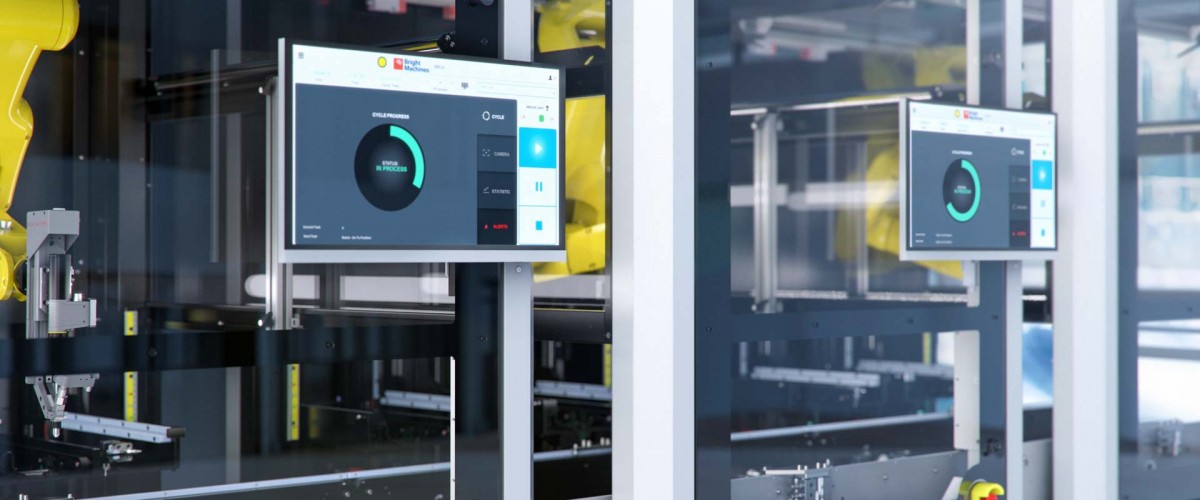Instant Factories: Bright Machines’ Software Defined Manufacturing

By Amar Hanspal, CEO, Bright Machines
Originally posted on the Bright Machines Blog
The manufacturing industry has been a relentless adopter of software over the years, pioneering CAD/CAM/PLM systems, ERP solutions and a host of other technologies deployed to get competitive advantage. Their factories, however, turned mostly to lower-cost labor markets to create capacity and new capabilities.
Meanwhile, access to low cost labor around the world is rapidly diminishing, while the demand for products continues to grow unabated because of the rising middle class around the world. It’s clear that automation, in the form of smart machines and robots, will provide the next big leap in creating greater manufacturing capacity and capability. However, factory automation as we know it today has been hard to deploy and to scale. Industrial robots, for example, are carefully configured and driven by meticulously hand-coded scripts that take weeks to get right. While this approach works for certain high-cost, high-volume products (like automobiles), most products prove prohibitively expensive to automate in this way. It also leaves little room for flexibility or continuous improvement.
Bright Machines™ was founded on the belief that all of this can be made faster, simpler and more affordable, when powered by modern software. Today, we’re proud to announce that we’re making significant progress towards our vision with the introduction of Bright Machines Microfactories. Marking the reinvention of assembly manufacturing and inspection, Bright Machines Microfactories bring to life our vision of Software-Defined Manufacturing, enabling near-instant, configurable and intelligent assembly lines.
A Bright Machines Microfactory is comprised of Bright Robotic Cells (BRCs), modular robotic cells and material handling systems that act as building blocks and are configured by intelligent software called Brightware™, which configures and instructs these cells on the specific tasks necessary to assemble and inspect a product. In addition, this software layer dynamically responds to real-world situations, adjusting for these conditions and material changes. Our software-defined microfactories take advantage of a cloud-based architecture and AI to deliver significantly better assembly efficiency, while getting more intelligent and automated as they learn from each production cycle. This is an important step to realizing our vision of a fully autonomous production lines and programmable factories.
Automating the backend of the factory floor is only the first step towards a future when software defines every phase of the manufacturing lifecycle. A future when fully-programmable factories are the norm, meeting the requirements for speed, scale and flexibility that tomorrow’s manufacturers will demand. Bright Machines is working towards that future every single day, and we’re proud to deliver part of that vision of the future today. We won’t stop until we’ve fully realized the promise of Software-Defined Manufacturing for our customers and the industry.











